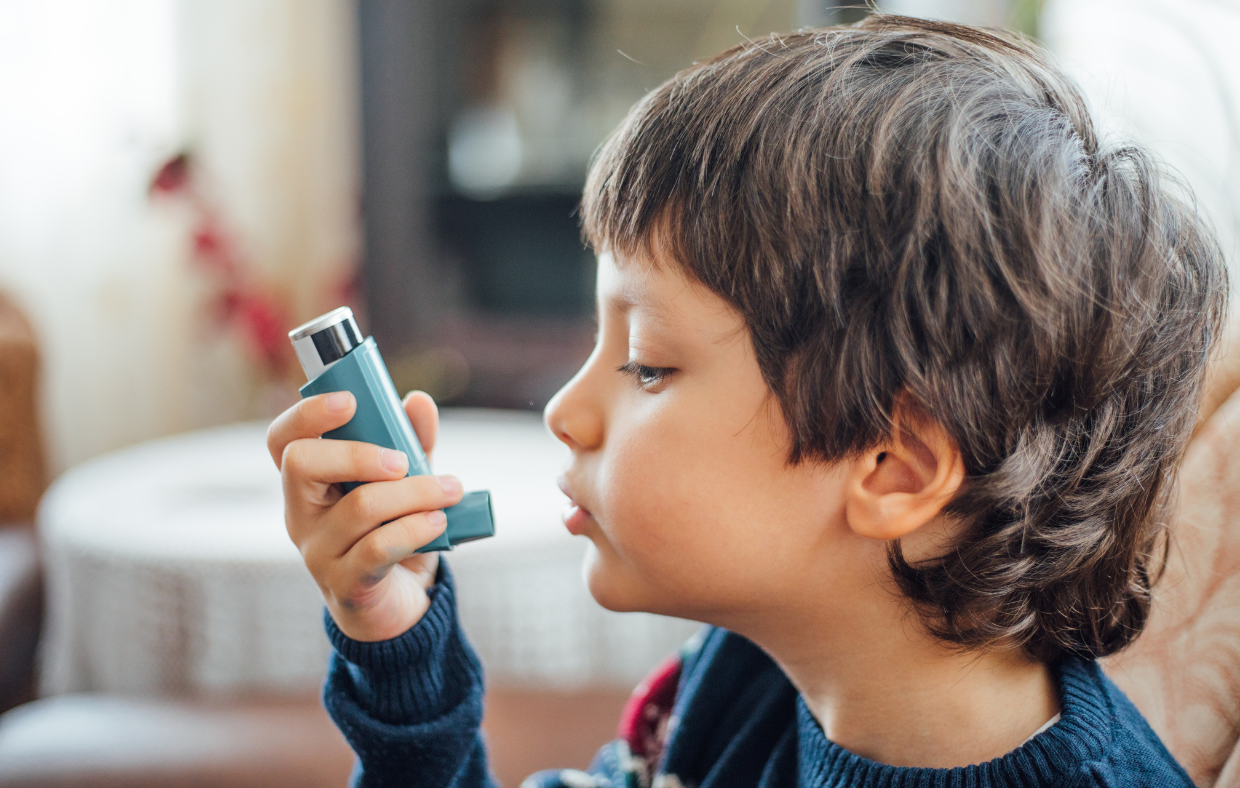This has been a rough spring for children with asthma, the chronic inflammatory condition that can make it difficult to breathe. Not only are seasonal allergies making people miserable, but with the lifting of COVID safety precautions, other viruses are making a comeback, including influenza. Allergies and respiratory viruses are two major triggers for asthma.
As a pediatrician, I work with patients and their families to identify asthma as early as possible so children can grow up without restrictions. With proper treatment, nearly all children can regularly attend school, run and play at recess, and participate in sports and other outdoor activities.
SYMPTOMS
An “asthma attack” occurs when the airways in the lungs become narrowed due to swelling, inflammation, and excess mucus. This results in coughing and wheezing as children try to get a deep breath or to express air out. This can be both uncomfortable and dangerous.
Asthma is often accompanied by allergies and eczema; all are products of a hyper-reactive immune system.
TRIGGERS
Common triggers for asthma include:
- Respiratory allergies caused by pollen, dust, pet dander/hair/fur, mold
- Viral illnesses such as cold or flu
- Exercise or physical exertion
- Irritants such as second-hand smoke (tobacco or marijuana), wildfire smoke, traffic exhaust, or pesticides
- Dramatic temperature changes, including seasonal changes
- Periods of intense stress
Regardless of the trigger, the inflammation response is real. Asthma is not “all in their head” and should be treated appropriately.
WHEN TO SEEK TREATMENT
Asthma can be challenging to diagnose because it shares symptoms with other conditions. Sometimes it becomes evident during an illness, but other times it may require the observation of patterns or a few visits with your medical provider to figure it out. If your child has regular bouts of wheezing, coughing, or nighttime symptoms, consider calling your pediatrician. If your child gets sicker than classmates in winter when colds are common or during flu season, that’s another tell-tale sign. If there’s a family history of asthma, your child is at higher risk.
MANAGEMENT
Management of asthma can be broken down into urgent treatments and preventative measures.
Usually, the first line of immediate treatment is an albuterol inhaler, usually used with a spacer to improve effectiveness. Sometimes a nebulizer machine may be used to administer the medication to young children. Albuterol is considered a rescue medicine that can be used every four hours at home and more frequently in a hospital setting. It dilates (opens) the inflamed airways when asthma flares.
Seek emergency treatment if your child needs a rescue inhaler more than every four hours, if the inhaler doesn’t improve labored breathing, or if your child cannot complete a full sentence without being out of breath. For very young children, listen for grunting as they try to breathe. Your medical provider may recommend a short course of oral steroids.
If a child is having persistent or frequent asthma symptoms, preventative measures may be indicated. These controller medications may include inhaled steroids, daily allergy medication, nasal spray, or montelukast (which blocks the inflammatory leukotriene molecules).
Reducing asthma triggers is another great way to avoid flare ups. Preventive measures can also include using air purifiers and not snuggling grandma’s cat, as well as staying updated on routine childhood vaccines and getting vaccinated against influenza and COVID-19.
GOAL OF MANAGEMENT
Some children may outgrow their asthma; however, for many, asthma is a lifelong condition to be managed, not cured. With good management, children can participate in all sorts of activities.
For safety, it’s important to have an asthma action plan, a one-page worksheet you create with your medical provider that explains what to do under various circumstances. Post it on the fridge where all can see it. In the case of moderate or severe asthma, share the plan with your child’s school, childcare providers, and anyone else responsible for your child’s well-being.
If your child has a rescue inhaler, give an extra one to the school and complete any forms required to allow adults on-site to administer necessary medications at school as needed. This allows children to stay at school instead of getting picked up every time they cough or wheeze.
Finally, if your child continues to struggle, make another appointment with your medical provider. Don’t give up! And see your medical provider every three months for moderate-to-severe asthma to address subtle changes before they cause problems.
Asthma doesn’t have to get in the way of a fun and action-packed childhood.
Dr. Casey Johnston is a pediatrician at MCHC Health Centers, a community-based and patient-directed organization that serves Mendocino and Lake Counties, providing comprehensive primary healthcare services as well as supportive services such as education and translation that promote access to healthcare. Learn more at mchcinc.org.

 MyChart Login
MyChart Login

